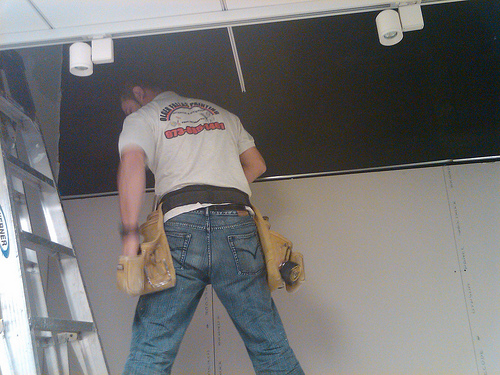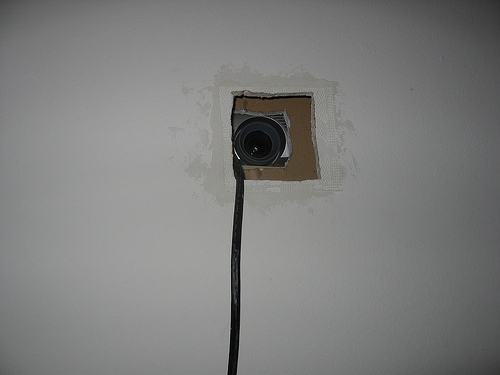[post_name repairing drywall How to Repair Popped Nails in Drywall

The net has actually transformed a whole lot of things. Many companies have browsed the web to complete in the marketplace. In spite of the consistent movement towards the electronic industry, a great deal of companies still preserve a brick as well as mortar office. They do it for different factors. Whatever the factor, when a company has a physical area, it needs maintenance as well as update. Therefore, an organisations will certainly have hound for drywall repair service solutions, faster or later. This short article assists companies trying to find handymen repainting services for their area. It supplies a list of five steps. Services can utilize this list to hire the most effective drywall repair work as well as paint solution for their work:
- Analysis - Ask on your own, if you need an expert drywall fixing solution. There are lots of tiny repairs, which you can do on your own. If you are unclear, it is best to telephone an expert. Depending on the extent of the job - a whole manor or a tiny space - you could pick between a professional or an entire team.
- Study - Conduct a research study. Ask your family and friends for referrals. Rely on the internet to discover drywall paint solutions in your location. This research study shall not take much time. Yet, it will certainly give you with a fairly lengthy list of agreements and specialist handymen.
- Meeting - Once you have the checklist, it is time to reduce it to one. You can begin with checking the names in the list with Bbb. If a business has issues, reduced its name. If there are adverse testimonials on the net, they are probably not the best contractor for the work. If your buddies state it misbehaves, they are most likely bad. Shorten the list to a few names, phone them, and make a statement of their reactions.
- Abilities and also experience - You can generally hire a company with minimal experience and less skills for less money. Although you conserve in the short run, the financial savings are not worth it. It is recommended to choose companies with longer experiences and a bigger skillset. They will save you much headache and also cash in the future.
- Licensing - It is constantly smart to opt for business that adhere to regional laws. If they do not have lawful compliance, you might discover yourself in trouble. It is a good suggestion to ask them if they have actually all the needed certifications. You could then validate the authenticity of the certifications online.
Drywall work is usually a crucial part of building enhancement tasks. It is wiser to hire only one of the most seasoned, certified, and experienced professionals. You could discover service providers with individual calls or via the net. Good professionals will certainly raise the top quality of the whole renovation job.
How to Repair Drywall Or Plasterboard Walls
Do it on your own drywall installation is just one of the a lot more functional tasks you could take on as a homeowner. Whether you've got a ceiling that's been harmed by a dripping roofing or a/c unit pan, or some brand-new wall surfaces that become part of a renovating project, at some time, you'll need drywall service your home. The great thing is; with the best understanding, the correct devices, and also some method; practically anybody could do it. The standard thing you require to recognize include:
Materials-This may seem rather noticeable, yet there are a couple of different options.
- Density-Drywall or sheetrock can be found in 1/4", 1/2", and also 5/8" thicknesses. One of the most usual in residential is 1/2". 5/8" is extra typically used in commercial work and is a demand of building ordinance in numerous areas as a result of it's higher fire immune ranking. 1/4" is primarily made use of over other materials such as paneling or plaster when a different kind of wall surface area is wanted. If you're doing a patch or repair service; inspect the density of the existing drywall prior to buying your new material to insure that it matches.
- Application-Most walls and also ceilings will have basic gray sheetrock. However, in high dampness locations, such as shower rooms and kitchen areas; use the a lot more water immune green rock. There is additionally, currently, a drywall which contains the exact same sort of concrete fiber products made use of in tile backer boards for use on walls that will certainly do with ceramic tile.
- Joint Substance-Also called sheetrock mud, this is the crucial component to a successful do it on your own drywall installment. This will certainly be available in pre-mixed paste like type in boxes or pails or powdered, in bags, that need to be mixed with water. There are likewise quick drying out kwikset materials that can be utilized for spots and repair works.
- Joint Tape-This could be purchased in the conventional paper type, which should be applied with joint substance or in fiber tape, which is frequently used out of commission due to the fact that it eliminates one step of the process.
- Nails or Screws-Generally, nails have been used in residential job and also screws in commercial (due to using metal studs. Nevertheless, screws have come to be more in household due to the rate of screw weapons.
- Drywall Knives-These kinds of knives are not used for cutting, however, for spreading the mud, taping the joints, as well as drifting and skimming; as well as, in fact resemble a spatula greater than a blade. They are available in a range of widths from concerning 3" (utilized for taping joints) up to 12" (for drifting and also skimming). You will, probably, need at the very least 3 dimensions for any kind of work, as each skim coat obtains a little wider.
- Mud Frying pan-These lengthy rectangular frying pans come in metal or plastic as well as are utilized for holding the joint compound. They're narrow enough to hold with one hand, while making use of the blade with the various other.
- Energy Knife/Sheetrock Saw-Most of the cutting of sheetrock is now finished with energy blades with interchangeable blades. Adjustment them as frequently as required for a clean very easy cut. Sheetrock saws are long (regarding 10") triangular saws with little takes care of and also are used primarily for cutting openings for plumbing and also electrical.
- High Powered Drill & & Paddle Little bit-If you're doing a little fixing; you can blend the mud manually with a drywall knife. However for larger do it on your own drywall installment projects, it's vital that you have a strong adequate drill to mix the mud with a paddle for the correct uniformity and to get rid of lumps.
- Protect it Great-Don't stint nails or screws. You don't desire activity when somebody raids the wall. Failing to appropriately secure it will result in fractures in the mud.
- Look for Cutouts-Maintain a close eye on switches, plugs, as well as phone jacks. They're easy to hide and hard to find later.
- Have Sufficient Assist-Sheetrock weighes. Make sure you have a person in order to help you hold it while you get the screws or nails in. This is specifically true when hanging ceilings.
- Countersink the Fasteners-See to it the nails or screws penetrate past the surface to ensure that they can be covered with mud.
- Tape the Seams-This can be finished with either the paper or fiber tape. With paper, spread a thin coat of mud over the seam, the, using a drywall knife; press the tape right into the mud and over the seam. After that use the blade to remove the excess mud. When this process is completed; you have to await the mud to dry before using the initial skim coat. The advantage of the fiber tape is; it adheres to the sheetrock without the requirement for mud. So, you could right away apply a skim coat.
- Float as well as Skim-This might be done in one coat or it could take 2 or 3. The concept is to have an even surface area without rises, bumps, as well as dips. One of the tricks to a successful do it on your own drywall setup is mixing the mud to the right uniformity so it spreads out quickly. The other is simply good old made practice. Some people require to it quicker than others. Yet, the more you do it, the far better you'll be.

Drywall Repairs
Drywall repair Wilton Manors - drywall sander
